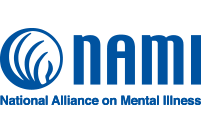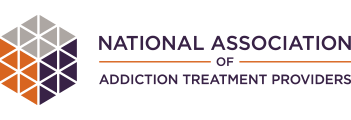One of the most difficult aspects about cocaine addiction treatment is knowing when you need help. By understanding how cocaine works and how treatment can be effective, you or your loved one are one step closer to recovery. Addiction Recovery Choice works with a large network of addiction treatment centers across the country that offer expert treatment for cocaine addiction.
History of Cocaine Use & Abuse
Cocaine, considered by many the drug of the 1980s and ‘90s, is, surprisingly, one of the oldest known drugs. The pure chemical, cocaine hydrochloride, has been an abused substance for more than 100 years, and the indigenous people of places like Peru and Bolivia have been ingesting coca leaves, the source of cocaine, for thousands of years.
In the early 1900s, it became the main stimulant drug used in tonics and elixirs developed to treat a wide variety of illnesses. Today, cocaine is a Schedule II drug, meaning that it has high potential for abuse, but can be administered by a doctor for legitimate medical uses (such as a local anesthetic for some eye, ear, and throat surgeries). Putting cocaine in that historical context, however, does little to offset the consequences of its abuse. In 1985, an estimated 5.7 million Americans age 12 and over were chronic cocaine users. Less than 15 years later, that figure was down to 1.5 million – but it’s still a startling reminder of how cocaine abuse and addiction continue to cause pain and destruction throughout the U.S.
The National Institute on Drug Abuse notes that there are basically two chemical forms of cocaine: the hydrochloride salt and the “freebase” form of cocaine, generally known as “crack.” The hydrochloride salt, or powdered form of cocaine, dissolves in water and, when abused, can be taken intravenously (by vein) or intranasally (in the nose). Freebase refers to a compound that has not been neutralized by an acid to make the hydrochloride salt.
Known by such names as “C,” “snow,” “flake,” “coke,” or “blow,” cocaine is generally sold on the street as a fine, white, crystalline powder. Street dealers generally dilute it with such inert substances as cornstarch, talcum powder, and/or sugar, or with such active drugs as procaine (a chemically related local anesthetic) or with such other stimulants as amphetamines. When the freebase form, or crack cocaine, is smoked, the user experiences a high in less than 10 seconds. This rather immediate and euphoric effect is one of the reasons behind crack’s enormous popularity.
Understanding Cocaine Addiction
Cocaine offers a powerful high and causes a difficult addiction; it is considered one of the toughest drugs to quit using.
Heavy cocaine use causes changes in the brain. These changes:
- Make it hard to feel good without cocaine
- Require the use of ever greater amounts of cocaine to feel the same effects
- Change areas of the brain responsible for impulse control, making it harder to resist temptation
Cocaine addicts feel intense cravings for months after quitting; and even after years of abstinence, a sudden trigger can create intense drug cravings seemingly out of nowhere. Problematically, cocaine damages the part of the brain responsible for making us feel good, and in the early period of cocaine addiction recovery, symptoms of depression, restlessness and irritability make it difficult to maintain the resolve to stay abstinent.
Some cocaine addicts are able to quit on their own; many require treatment assistance to do so. Although cocaine addiction is difficult to overcome, with effective treatment, lasting abstinence is very possible.
Cocaine Withdrawal Symptoms
A cocaine addict attempting to quit using the drug will progress through a difficult period of withdrawal symptoms. Withdrawal symptoms can include:
- Lethargy and tiredness
- Depression
- Irritability
- Restlessness
- Hunger
- Insomnia
- Nightmares
- Drug cravings
- Suicidal thoughts
Withdrawal symptoms can endure for months, particularly cravings for cocaine and depressed mood. Unfortunately, there is no medication available to help cocaine addicts manage cravings (like Suboxone helps opiate addicts manage cravings, for example). Many cocaine addicts in recovery attempt to self medicate their symptoms, with substance like benzodiazepines (Valium or Xanax) or alcohol. This often results in the transference of addiction to a new substance.
The withdrawal symptoms make cocaine a tough drug to kick. Most people benefit from addiction treatment to learn ways to manage cravings and to receive support from others who understand.
Cocaine Addiction Treatment Options
Residential treatment is sometime preferable, as it removes a person from an environment of temptation for the initial period of abstinence.
People with less severe addictions, better sober support systems and without co-occurring mental health problems or addictions may find that treatment on an outpatient basis is sufficient. However, whether treatment is delivered on an inpatient or outpatient basis, the longer a person stays active in treatment, the better the chances of long term success and lasting recovery. Significantly, people who stay active in treatment for 1 year or longer are shown to do much better over the long run.
No one form of cocaine addiction treatment is right for every cocaine addict. It is important to match the treatment to the preferences, beliefs and needs of the individual. Some commonly used treatment approaches for cocaine addiction are listed below.
Cognitive Behavioral Therapy (CBT)
A CBT therapist believes that cocaine addicts can:
- Learn what situations put them at risk of relapse
- Learn to avoid those situations when possible
- Learn effective strategies that will help them to deal with temptation when it does arise
CBT is one of the most effective therapeutic interventions for cocaine addiction. CBT is a therapeutic technique that helps cocaine addicts:
- Understand why exactly they want to quit cocaine, and the likely consequences of not quitting
- Learn to identify situations or emotions that may provoke a desire to use cocaine
- Learn skills to cope with cravings or situations of temptation
- Learn skills to cope with other negative life events and or feelings
- Learn skills that help to improve relationships and social support systems
CBT is a fast acting therapeutic technique that helps cocaine addicts crystallize their motivation to quit and then provides them with real-world techniques to avoid relapse.
This therapeutic technique has been intensely examined within many controlled variable studies and CBT has consistently performed better than or in some cases, as good as, other common therapeutic techniques for the treatment of cocaine addiction.
CBT works as well or better than anything else!
CBT can occur in an outpatient or residential setting. There are some advantages to CBT on an outpatient basis, primarily, that it gives the client an opportunity to practice the techniques being learned in each session and to discuss with the therapist the effectiveness and possible need for modification of those techniques.
The National Institute for Drug Abuse (NIDA) recommends CBT in an inpatient setting for:
- Those that have an addiction to another drug concurrently with cocaine, (not necessarily the case with alcohol or marijuana)
- Those who have additional health issues, beyond their addiction to cocaine
- Those who have unstabilized bipolar disorder or any type of psychosis
- Those without a stable and sober living environment
CBT works very well when it is combined with other components of cocaine addiction treatments, such as medication for mental illness, 12 steps participation, individual counseling, support group attendance, family therapy, education or vocational classes.
Community Reinforcement
Also known as contingency management, community reinforcement based cocaine treatment is a form of therapy that explicitly rewards recovering cocaine addicts for meeting certain behavioral targets.
Vouchers are typically offered as a reward for positive accomplishment, such as negative urine screens for cocaine or regular attendance in treatment meetings. These vouchers can then be traded for certain goods or services, such as gift certificates, meals at local restaurants, clothing or appliances, etc.
Community reinforcement is a form of behavioral therapy that is based on the conceptual framework of people performing certain actions that earn them reward and avoiding actions that earn them punishment or pain.
Breaking free from cocaine is a very difficult task to accomplish, and unfortunately, because of the legacy of addiction on the mind, cocaine addicts in recovery do not feel much “internal” reward for successfully quitting – in those early days, they feel too down to feel good. Earning wanted goods and services for accomplishing abstinence is a way to help cocaine addicts feel “rewarded” for quitting, until they recover enough to start feeling the intrinsic rewards of abstinence for themselves.
In clinical trials, community reinforcement has been proven to work better than placebo and better than the participation in 12 steps meetings only.
The 12 Steps
Many recovering cocaine addicts find that attending 12 steps fellowship meetings helpful in lasting recovery. Both cocaine anonymous and narcotics anonymous offer meetings filled with people who’ve had similar experiences using similar drugs and all who share an attempt to maintain sobriety. Many people are introduced to the 12 steps during an initial period of primary treatment and find that the support offered by frequent attendance at meetings is beneficial. Attending community meetings on a regular basis also helps recovering cocaine addict forge new sober friendships with others also motivated to avoid cocaine use.
Some people find the spiritual elements of the 12 steps philosophy problematic and others disagree with its message of powerlessness over cocaine. Other support group alternatives include groups such as:
- SMART Recovery
- Rational Recovery
- Moderation Management
- SOS
- Others
People who maintain an active participation in recovery activities have a better prognosis rate. Most experts recommend finding an organization and group that you are comfortable with and using the collective power and experience of the group for support, particularly during the first year of recovery.
Individual Therapy
Many treatment programs offer some individual counseling as a part of a more comprehensive curriculum. Individual therapy is useful as it allows the therapist to probe in a holistic manner into any areas of life, social, medical, vocational etc. that may contribute to relapse.
Individual therapy is congruent with other forms of addiction treatment.
Medication
Learn about studies on medication that can treat addiction
Unfortunately, no medication is yet available to help cocaine addicts manage the lasting cravings that threaten sobriety. Research continues in earnest.
One medication that has shown promise, but that is not yet FDA approved for use in cocaine addition treatment, is disulfiram, also known as Antabuse. Disulfiram was widely used in the past as a medication to help alcoholics stop drinking. When disulfiram is taken with cocaine or alcohol, the user becomes very ill, and this provides a sufficient negative reinforcement to avoid using.
Other medications under investigation include:
- Modafinil – which reduces the euphoria of cocaine use
- Baclofen – which reduces cocaine cravings
- Vigabatrin – which reduces cocaine cravings
- Tiagabine – which reduces the euphoria of cocaine use
- Topiramate – which reduces cravings
Researchers are also investigating a cocaine and methamphetamine vaccine, that once administered, would prevent these drugs from having any rewarding effects.
Getting Past Cocaine Addiction
Breaking free from cocaine addiction is tough, but doable. Research shows that participation in addiction treatment improves your odds of making a successful and lasting recovery. For the best chances of success, look for an addiction treatment program that offers evidence based cocaine treatments.












